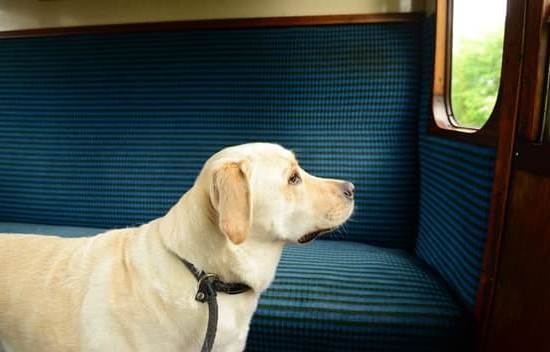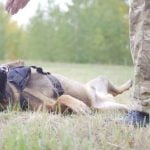Training your dog to not chew on cords is essential for their safety and the well-being of your household. In this article, we will delve into the potential hazards that can arise from this behavior, including dangers to your furry friend and the costly consequences of damaged cords. By understanding these risks, you will be equipped with the knowledge and motivation to address this issue promptly.
Chewing on cords can pose significant risks to your dog’s health. Not only can it result in electric shocks or burns, but ingesting wires or cable coverings can lead to internal injuries or blockages that may require emergency surgery. Additionally, damaged cords can cause electrical fires or power outages, potentially affecting your entire home. It is crucial to tackle this behavior head-on to safeguard both your pet and your property.
Aside from the physical dangers, chewing on cords can also have financial implications. The cost of replacing damaged electronics and cords can quickly add up, resulting in unnecessary expenses that could have been avoided with proper training. Taking proactive steps to prevent cord chewing now will help save you money in the long run.
In the following sections of this article, we will dive deeper into why dogs chew on cords, how to create a safe environment for them at home, effective training techniques using positive reinforcement, redirecting their attention away from cords with distractions and deterrents, establishing boundaries through consistency, handling setbacks during training, and alternative solutions to protect your cords.
With patience and persistence, you can enjoy a cord-chewing free environment with a well-trained dog who understands what is off-limits.
The Root Causes
Understanding why dogs chew on cords is essential in order to effectively train them not to engage in this behavior. Identifying the root causes behind your dog’s chewing habit will help you address the issue directly and prevent any potential hazards for your furry friend.
One possible reason for your dog chewing on cords is teething. Just like babies, puppies go through a teething phase where their gums may feel sore and irritated. Chewing helps alleviate discomfort during this time. Another common cause is boredom. Dogs with pent-up energy or insufficient mental stimulation may resort to chewing on cords as a way to entertain themselves. Additionally, anxiety or separation anxiety can also manifest as destructive chewing behavior.
In order to address these issues, it is important to provide your dog with plenty of exercise and mental stimulation. Regular walks or runs, interactive toys, and puzzle games can help tire them out and divert their attention away from cords. Furthermore, ensuring that your dog has appropriate chew toys can redirect their natural chewing instincts onto safe objects.
Overall, by understanding the root causes of your dog’s chewing habit, you can tailor your training approach and take the necessary steps to address the underlying issues effectively. With consistency and patience, you can train your dog not to chew on cords and create a safe environment for both them and your electrical devices.
Preparing Your Home
Creating a safe environment for your dog is an essential step in preventing cord chewing. By evaluating potential cord hazards in your home, tidying up loose cords and cables, and utilizing cord management solutions, you can significantly reduce the risk of your dog chewing on cords.
One of the first things you should do when preparing your home is to evaluate potential cord hazards. Take a walk around your house and identify any exposed cords that may be tempting for your dog to chew on. This includes cords from lamps, electronics, chargers, and appliances. Make a list of these areas so that you can prioritize which ones need immediate attention.
Once you have identified the potential cord hazards in your home, it’s time to tidy up loose cords and cables. Start by unplugging any unnecessary devices or appliances and neatly coiling their cords out of reach. Use cable clips or ties to secure the coils against furniture or walls to prevent them from becoming enticing chew toys for your dog. Additionally, consider rearranging furniture or using cord concealers to keep cords hidden and inaccessible to your furry friend.
Utilizing cord management solutions can also be beneficial in creating a safe environment for your dog. There are various products available on the market designed specifically to protect cords from chewing damage. Cord protectors are plastic covers that fit over electrical wires and cables, making them less appealing and more difficult to access for dogs.
Another option is using conduit or tubing to enclose wires and conceal them completely. These solutions not only help prevent damage caused by chewing but also give your home a neater appearance.
By taking proactive steps to prepare your home and eliminate potential cord hazards, you can create a safe environment for your dog while minimizing the risk of cord chewing accidents.
The Power of Positive Reinforcement
Positive reinforcement is a highly effective training technique when it comes to teaching your dog not to chew on cords. This approach involves rewarding your dog for desired behavior, encouraging them to repeat it. By utilizing positive reinforcement, you can create a positive association and motivate your dog to engage in alternative activities instead of chewing on cords.
Understanding the effectiveness of positive reinforcement
Positive reinforcement works by associating a reward with the desired behavior. In the case of cord chewing, you can praise and reward your dog whenever they avoid the cords or focus their attention on appropriate chew toys. This method helps your dog understand what behavior is expected from them and reinforces their understanding that avoiding cords leads to positive outcomes.
Introducing basic obedience commands
Training your dog in basic obedience commands such as “leave it” or “drop it” can be instrumental in preventing cord chewing accidents. These commands allow you to redirect your dog’s attention away from cords and towards more appropriate objects. Consistently practicing these commands during training sessions and incorporating them into everyday situations will reinforce the desired behavior over time.
Rewarding your dog for desired behavior
Consistency in rewarding positive behavior is key when using positive reinforcement techniques. Be sure to have plenty of rewards such as treats, praise, or playtime readily available when training. When your dog exhibits appropriate chewing behaviors or chooses an alternative toy over cords, provide immediate positive reinforcement. This will help strengthen the association between the desired behavior and rewards, making it more likely for your dog to continue making the right choices.
By implementing positive reinforcement techniques, you are not only creating a safe environment for your furry friend but also building a stronger bond based on trust and communication. Remember that training takes time and patience, so be consistent with your efforts and celebrate each step forward toward a cord-chewing free environment.
Distractions and Deterrents
Providing Alternative Chew Toys and Diversions
One effective way to redirect your dog’s attention away from cords is to provide them with alternative chew toys and diversions. Dogs have a natural need to chew, so it’s important to offer them appropriate outlets for this behavior. Invest in a variety of toys that are specifically designed for chewing, such as rubber or nylon bones, puzzle toys, or interactive treat dispensers. Rotate these toys regularly to keep your dog engaged and prevent boredom.
When selecting chew toys for your dog, make sure they are safe and durable. Avoid giving them objects that resemble cords or electrical wires to prevent confusion. Additionally, supervise your dog during playtime with chew toys to ensure they don’t accidentally ingest any small parts that could pose a choking hazard.
Using Bitter-Tasting Sprays or Deterrents
Another method to discourage cord chewing is by using bitter-tasting sprays or deterrents. These products have an unpleasant taste that dogs find unappealing, helping to deter them from chewing on cords. Apply the spray directly onto the cords or on a cloth and rub it against the cords.
It’s important to note that some dogs may be more persistent than others and may still attempt to chew on the cords even with the bitter taste. In such cases, you can try covering the cords with protective sleeves or tubing before applying the spray for added reinforcement.
Incorporating Interactive Puzzles for Mental Stimulation
Boredom is often a root cause of destructive behaviors like chewing on cords. To combat this boredom and redirect your dog’s attention away from cords, incorporate interactive puzzles into their daily routine. Puzzle toys are designed to mentally stimulate dogs by requiring them to problem-solve in order to access treats hidden inside.
These puzzles range from simple treat-dispensing balls to more complex games where your dog has to manipulate different compartments or sliding pieces to find their reward. By engaging your dog’s mind and providing them with a challenge, you can redirect their attention away from cords and prevent destructive chewing behavior.
By providing alternative chew toys and diversions, using bitter-tasting sprays or deterrents, and incorporating interactive puzzles for mental stimulation, you can effectively redirect your dog’s attention away from cords and discourage them from chewing on them. Remember to always supervise your dog when introducing new toys or sprays and continue reinforcing positive behavior with rewards.
Consistency is Key
Consistency is key when it comes to training your dog to not chew on cords. By establishing a routine and enforcing boundaries, you can effectively communicate to your dog what behaviors are acceptable and what are not. This section will provide guidance on how to establish a routine and enforce boundaries to prevent your dog from chewing on cords.
Setting clear boundaries is essential in preventing your dog from chewing on cords. Start by designating specific areas where your dog is allowed to be and where they are not. Use baby gates or closed doors to restrict access to areas where cords are present, such as home offices or entertainment centers. Make sure everyone in the household is consistent with these boundaries so that your dog does not get confused.
Consistently reinforcing training techniques is another important aspect of establishing a routine. Whenever you catch your dog showing an interest in cords, redirect their attention to a more appropriate chew toy or diversion. Use positive reinforcement techniques such as praise and treats when they choose the alternative item instead of the cords. Consistency will help reinforce the message that cords are off-limits.
Incorporating cord-chewing prevention into your daily routine is crucial for long-term success. Regularly inspect the areas where cords are present to ensure there are no new temptations for your dog. If you notice any loose cords or cables, tidy them up and secure them using cord management solutions like cable clips or cord covers. By making cord management part of your regular chores, you create an environment that reduces the risk of cord chewing incidents.
| Technique | Description |
|---|---|
| Setting Clear Boundaries | Designate specific areas where dogs are allowed/not allowed |
| Consistently Reinforcing Training Techniques | Redirect attention to appropriate chew toys and give positive reinforcement |
| Incorporating Cord-Chewing Prevention into Daily Routine | Regularly inspect areas with cords, tidy up loose cords, use cord management solutions |
Patience and Persistence
One of the most important things to remember when training your dog not to chew on cords is to have patience and persistence. It’s common for setbacks to occur during the training process, but with consistency and determination, you can continue progressing with your dog’s training.
Understanding that setbacks are normal is crucial in maintaining a positive mindset throughout the training journey. Dogs can sometimes revert back to their old habits or get distracted by new objects, which may lead them to chew on cords again. This is not unusual and should not discourage you from continuing the training process.
When dealing with setbacks, it’s essential to troubleshoot potential challenges that may be contributing to your dog’s behavior. Review the root causes outlined in this article, such as teething, boredom, anxiety, or lack of exercise. Make sure you address any underlying issues your dog may be experiencing.
If you find yourself becoming overwhelmed or unable to make progress despite your best efforts, don’t hesitate to seek professional help. A certified dog trainer or behaviorist can provide valuable guidance and tailor a training plan specifically for your dog’s needs.
Overall, it’s important to stay committed and consistent with your training techniques. Keep reinforcing positive behavior and providing appropriate distractions and alternatives for your dog. With time and perseverance, you will be able to create a cord-chewing free environment and enjoy the benefits of a well-trained dog.
| Dealing with Setbacks | Continuing Training |
|---|---|
| Understand that setbacks are normal | Stay committed and consistent with training techniques |
| Troubleshoot potential challenges contributing to unwanted behavior | Reinforce positive behavior |
| Seek professional help if needed | Provide distractions and alternatives |
Alternative Solutions
While training your dog not to chew on cords is essential, there are also alternative solutions available to protect your cords and prevent potential damage. These solutions can provide an extra layer of security in case your training methods take some time to fully take effect.
One option is to utilize cord protectors. Cord protectors are specially designed covers that fit over your cords, creating a physical barrier between your dog and the cords. They are typically made of durable materials such as plastic or rubber, which makes them resistant to chewing and biting. Cord protectors come in various sizes and lengths, ensuring that you can find the right fit for different types of cords in your home.
Another way to safeguard your cords is by hiding them behind furniture or inside conduit. This method helps keep the cords out of sight and reach of your dog. Moving furniture strategically to cover the cords or using cable management systems like adhesive hooks or cable clips can help secure loose cords along walls or under desks. Additionally, using conduit allows you to conceal multiple cords within a protective tube that runs along the wall.
For those who prefer a wireless or cordless environment altogether, investing in cordless devices can be a viable solution. Nowadays, there are many wireless options available for common household items such as lamps, speakers, and chargers. By eliminating the need for visible cords altogether, you eliminate the temptation for your dog to chew on them.
By incorporating these alternative solutions into your cord-chewing prevention strategy, you can create a safer environment for both your dog and your electrical devices. While training continues to be necessary for long-term behavioral changes, these methods provide immediate protection until your dog learns not to chew on cords consistently.
Remember that consistency and persistence in implementing these solutions will significantly reduce the chances of damage caused by chewing and ensure a cord-chewing free environment for everyone in your household.
Conclusion
In conclusion, by following the steps outlined in this article, you can create a cord-chewing free environment and enjoy a harmonious relationship with your well-trained dog. Understanding the dangers of dog chewing on cords is essential as it can prevent potential hazards for your pet and costly damage to your cords. Identifying the root causes behind your dog’s chewing habit is crucial in addressing the behavior effectively.
Creating a safe environment for your dog involves evaluating potential cord hazards in your home and tidying up loose cords and cables. Utilizing cord management solutions such as cord protectors or hiding cords behind furniture will further ensure your pet’s safety. The power of positive reinforcement plays a vital role in training techniques, where introducing basic obedience commands and rewarding desired behavior promote a better understanding between you and your pet.
Redirecting your dog’s attention away from cords can be achieved by providing alternative chew toys and diversions. Bitter-tasting sprays or deterrents can also help discourage chewing behavior, while interactive puzzles provide mental stimulation to prevent boredom. Consistency is key when establishing a routine and enforcing boundaries; setting clear boundaries and reinforcing training techniques consistently are essential for long-term success.
It is important to remember that setbacks are normal during the training process. Troubleshooting potential challenges and seeking professional help if needed will aid in overcoming any difficulties along the way. Finally, appreciating the benefits of a dog who no longer chews on cords brings both peace of mind regarding your pet’s safety and prevents costly replacements or repairs.
By implementing these strategies and techniques, you can create an environment where cord-chewing is no longer an issue for you or your beloved canine companion. Celebrate their progress and achievements throughout the training process, as it highlights their growth and learning abilities. With patience, persistence, and dedication, you can enjoy a harmonious living space with a well-trained dog who no longer chews on cords.
Frequently Asked Questions
Why do dogs chew up electrical cords?
Dogs chew up electrical cords primarily due to their natural instinct to explore and investigate their surroundings using their mouths. Puppies, in particular, experience teething during which they feel the need to chew on objects to relieve discomfort.
Electrical cords may seem like attractive targets for chewing because they are often within reach, have a tempting texture, and emit low levels of electric currents that can stimulate a dog’s curiosity. Additionally, dogs may exhibit this behavior out of boredom or anxiety, seeking a form of stimulation or attention.
How do you puppy proof electrical cords?
To puppy-proof electrical cords and prevent your furry friend from chewing them, there are several effective strategies you can employ. Firstly, consider elevating or securing cords out of your puppy’s reach by using cord concealers or routing them behind furniture where they will be less accessible. Another solution is applying commercially available bitter apple spray or similar pet deterrents onto the cords – these substances have an unpleasant taste that discourages dogs from chewing.
Alternatively, you can use cord covers made from hard plastic or PVC tubing as a physical barrier to protect the wires. It is also helpful to redirect your puppy’s attention by providing them with appropriate chew toys and engaging in playtime regularly to dissipate excess energy.
How do I stop my pet from chewing wires?
If you are looking for ways to stop your pet from chewing wires beyond just puppies and young dogs, there are several preventive measures you can take. First and foremost, ensure your pet has plenty of suitable chew toys available that meet their needs – interactive toys that provide mental stimulation can be particularly beneficial. Regular exercise and play sessions help burn off excessive energy that might otherwise be directed towards destructive behaviors such as chewing wires.
Additionally, you can use safe deterrents designed specifically for pets on the cables themselves to make them less appealing – these products typically emit a harmless but unpleasant scent or taste when applied directly on the wires. It’s also important to supervise your pet closely while indoors until they have learned not to chew on cords, and consider using baby gates or crate training to restrict access to areas where wires are present. Finally, if you observe signs of persistent chewing or behavioral issues, consulting a professional dog trainer or veterinarian may provide valuable insights and guidance tailored to your specific situation.

Welcome to the blog! I am a professional dog trainer and have been working with dogs for many years. In this blog, I will be discussing various topics related to dog training, including tips, tricks, and advice. I hope you find this information helpful and informative. Thanks for reading!





